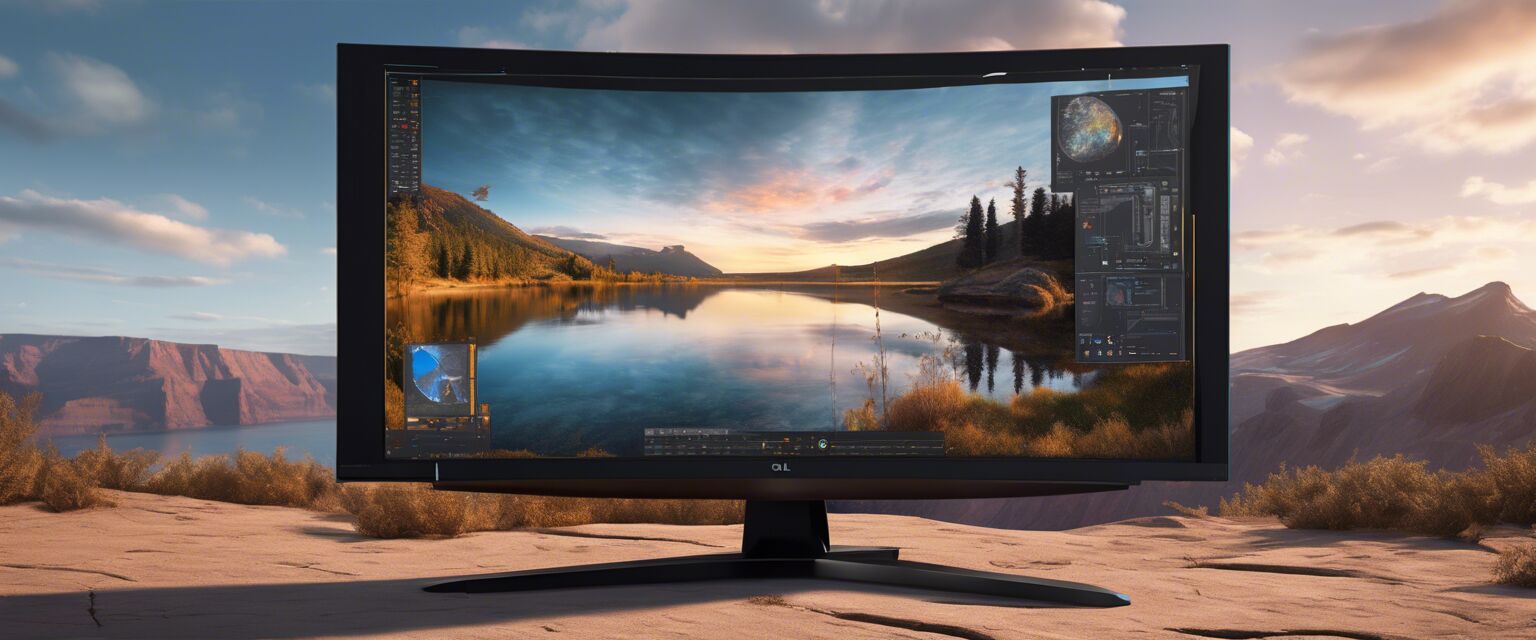
Understanding burn-in and OLED longevity
Key Takeaways
- Burn-in is a common concern with OLED technology, but it can be managed.
- Regular use and varied content can significantly reduce the risk of burn-in.
- Implementing built-in features and settings can extend your OLED monitor's lifespan.
- Choosing the right type of OLED monitor is crucial for longevity.
As OLED technology continues to evolve, many gamers are excited about the incredible visuals these monitors can deliver. However, concerns about burn-in and screen longevity often arise. In this comprehensive guide, we will explore what burn-in is, how it affects OLED monitors, and provide practical strategies to ensure your monitor remains in excellent condition for years to come.
What is burn-in?
Burn-in refers to the permanent discoloration of areas on a display caused by prolonged exposure to static images. While traditional LCD monitors can also suffer from image persistence, it is more pronounced in OLED displays due to their individual pixel illumination.
How does burn-in occur?
Burn-in occurs when certain pixels on the OLED panel are used more frequently than others, leading to uneven wear. This typically happens when static images, such as game HUDs, logos, or news tickers, are displayed for extended periods. Over time, the pixels that display these static images can degrade faster than those displaying dynamic content.
Strategies to prevent burn-in
While burn-in is a genuine concern, there are several effective strategies you can adopt to minimize the risk:
- Vary your content: Regularly change the content you view to avoid prolonged exposure to static images.
- Use screen savers: Invest in a good screen saver that activates after a set period of inactivity.
- Adjust brightness settings: Lowering brightness can reduce the stress on your OLED panel.
- Enable pixel shifting: Many OLED monitors have a pixel-shifting feature that subtly moves the image to prevent static content.
- Take breaks: Give your monitor a break from static images by switching to dynamic content or turning it off periodically.
Understanding OLED longevity
Longevity in OLED displays is determined by various factors, including usage habits, environmental conditions, and inherent technology limitations. Below, we delve into these factors and how they impact your monitor's lifespan.
Key factors affecting OLED longevity
| Factor | Description |
|---|---|
| Usage habits | How often and in what manner you use your monitor affects its overall lifespan. |
| Environmental conditions | Temperature, humidity, and air quality can influence OLED performance over time. |
| Technology advancements | Newer OLED technology often comes with improvements in lifespan through better materials and designs. |
Choosing the right OLED monitor
Selecting an OLED monitor that suits your needs while considering longevity is essential. Here are some aspects to look for:
- Burn-in protection features: Look for models with built-in burn-in prevention technologies.
- Warranty and support: Check the warranty coverage for burn-in issues.
- Reviews and recommendations: Research user experiences and expert reviews on monitor longevity.
Conclusion
Understanding burn-in and taking proactive measures can ensure that your OLED gaming monitor remains vibrant and functional for many years. By varying your content, utilizing built-in features, and selecting the right model, you can enjoy the stunning visuals of OLED technology without the fear of premature degradation.
Tips for beginners
- Start with a lower brightness setting and gradually increase as you become accustomed to the display.
- Familiarize yourself with your monitor's settings and features to make the most of its capabilities.
- Incorporate regular breaks into your gaming sessions to give your monitor a rest.
Pros
- Exceptional color accuracy and contrast.
- Fast response times for gaming.
- Wide viewing angles.
Cons
- Risk of burn-in with static images.
- Typically higher price point compared to LCDs.
- May require more maintenance to preserve quality.
Learn more about OLED monitors
If you're interested in exploring further, check out these pages:
- 4K OLED gaming monitors
- Budget-friendly OLED gaming monitors
- Curved OLED gaming monitors
- G-Sync & FreeSync OLED monitors
- Portable OLED gaming monitors
Visual representation of OLED technology

Future of OLED technology
As advancements continue in OLED technology, the longevity and performance of these monitors are expected to improve. Researchers are constantly working on enhancing materials and designs to mitigate issues like burn-in, ensuring that users can enjoy the stunning visuals for longer periods.
Final thoughts
Investing in an OLED gaming monitor can significantly enhance your gaming experience. By understanding the risks associated with burn-in and taking proactive steps to mitigate them, you can enjoy vibrant graphics and impressive performance for many years to come.









